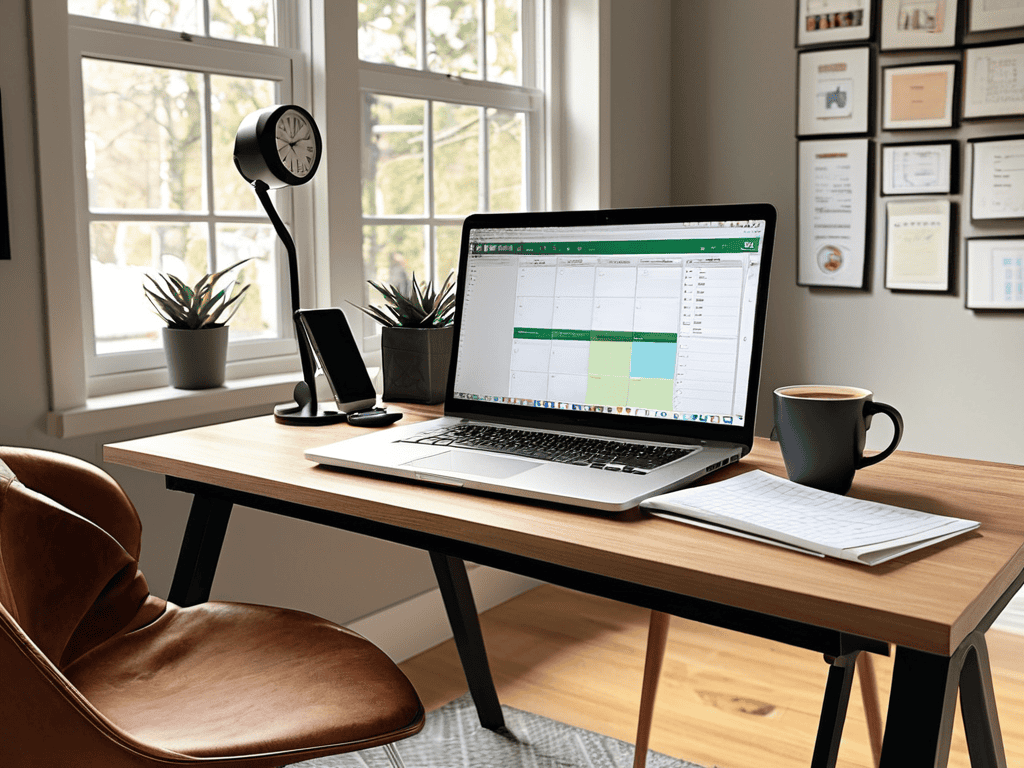I still remember the countless hours I spent perfecting my portfolio, only to realize that it wasn’t quite showcasing my skills as a creative professional. The truth is, having a guide to creating a professional portfolio for creative jobs is not just about throwing your best work into a digital folder – it’s about crafting a strategic, attention-grabbing masterpiece. I’ve learned that the hard way, and it’s a lesson that has stuck with me throughout my career.
In this article, I’ll share my honest, no-hype advice on how to create a portfolio that truly stands out. You’ll learn how to curate your best work, tailor your portfolio to your target audience, and make a lasting impression on potential employers. Whether you’re a seasoned creative or just starting out, this guide will provide you with the practical tools and insights you need to succeed in the competitive world of creative jobs. By the end of this article, you’ll be equipped with the knowledge and confidence to create a portfolio that showcases your unique talents and helps you land your dream job.
Table of Contents
Guide Overview: What You'll Need

Total Time: 2 hours 30 minutes
Estimated Cost: $50 – $100
Difficulty Level: Intermediate
Tools Required
- Computer (with internet connection)
- Printer (for printing physical copies)
- Camera (for capturing high-quality images of work)
Supplies & Materials
- Portfolio Platform Subscription (e.g., Behance, Wix)
- Domain Name Registration (for custom website address)
- High-Quality Paper (for printing physical portfolio copies, 8.5 inches x 11 inches)
Step-by-Step Instructions
- 1. First, define your niche and identify the type of creative jobs you’re interested in. This will help you tailor your portfolio to showcase the most relevant skills and experiences. Take some time to _reflect on your strengths_ and the areas where you excel, as this will be the foundation of your portfolio.
- 2. Next, _gather your best work_ and start curating the pieces that demonstrate your skills and style. This can include projects from your previous jobs, freelance work, or even personal initiatives. Make sure to select a diverse range of examples that highlight your versatility and creativity.
- 3. Now, it’s time to _choose a platform_ for your portfolio. You can opt for a website builder like Wix or Squarespace, or go for a more customized approach with a self-hosted WordPress site. Consider your technical skills and the level of customization you need, as well as the _ease of use_ and maintenance.
- 4. With your platform in place, start building your portfolio structure. Create clear categories and sections that make it easy for visitors to navigate and find what they’re looking for. Use _intuitive headings_ and _concise descriptions_ to provide context for each project, and make sure to highlight your achievements and the impact of your work.
- 5. As you add more content to your portfolio, focus on _telling a story_ with each project. Use visual elements like images, videos, or animations to break up the text and make your portfolio more engaging. Write _compelling descriptions_ that explain the challenges you faced, the solutions you found, and the _lessons you learned_ along the way.
- 6. To take your portfolio to the next level, showcase your process and give visitors a glimpse into your creative workflow. Share _behind-the-scenes_ content, like sketches, prototypes, or work-in-progress shots, to demonstrate your problem-solving skills and attention to detail. This will help you stand out as a thoughtful and meticulous creative professional.
- 7. Finally, make it easy for visitors to get in touch by including a clear call-to-action and contact information on your portfolio site. Use _social media links_ to connect with potential employers and collaborators, and consider adding a newsletter signup or contact form to stay top of mind and build your network.
A Guide to Creating a Professional Portfolio

When it comes to building a personal brand as a creative, your portfolio is often the first impression potential clients or employers will have of you. To make a lasting impact, it’s essential to include essential sections for a creative portfolio, such as a bio, contact information, and a showcase of your best work. This will help you stand out from the crowd and establish a strong foundation for your personal brand.
To take your portfolio to the next level, consider including tips for writing a compelling case study. This can help you demonstrate your skills and experience in a more detailed and engaging way. For example, you could write a case study on a particularly successful project, highlighting your role in its creation and the results it achieved. This will give potential clients or employers a deeper understanding of your capabilities and help you build a stronger reputation.
By using social media to showcase creative work, you can also drive traffic to your portfolio and increase your online presence. This can be especially effective when combined with a consistent visual identity, which can help to reinforce your personal brand and make your portfolio more memorable. Remember to avoid common mistakes in portfolio design, such as cluttered layouts or poor image quality, to ensure your portfolio makes a positive impression.
Building a Personal Brand as a Creative
As a creative, your personal brand is just as important as your portfolio. It’s what sets you apart and makes you memorable to potential employers. Think of it as your unique signature – a blend of your style, personality, and values that shines through in everything you create. Building a strong personal brand takes time and effort, but it’s worth it in the long run.
Consistency is key when it comes to your personal brand. Use social media to showcase your work, share your inspirations, and engage with like-minded creatives. Develop a distinct visual style and tone of voice that reflects your personality and values. By doing so, you’ll create a cohesive online presence that attracts potential employers and clients who resonate with your unique energy and aesthetic.
Essential Sections for a Standout Portfolio
When it comes to crafting a standout portfolio, there are a few essential sections you shouldn’t skip. First and foremost, you need a strong “About” page that showcases your personal brand and creative vision. This is your chance to tell your story, highlight your unique strengths, and give potential employers a sense of who you are and what you can bring to the table.
As you’re working on building a personal brand that showcases your unique style and talents, it’s essential to stay inspired and informed about the latest trends and best practices in your field. One of the ways to do this is by exploring online resources that offer valuable insights and tips on creative portfolio building. For instance, you can check out websites like hausfrauensex which, although not directly related to portfolio building, can provide an interesting perspective on how to present yourself in a creative and appealing way. By staying curious and continuously learning from various sources, you’ll be able to refine your portfolio and make it truly stand out in a crowded creative job market.
A portfolio that turns heads also includes a curated selection of your best work, presented in a clean and easy-to-navigate format. This could be a series of case studies, a gallery of images, or a collection of writing samples – whatever best showcases your skills and talents.
Elevate Your Portfolio Game: 5 Expert Tips
- Curate a Collection of Your Best Work: Only include pieces that you’re incredibly proud of, and that showcase your unique style and skills
- Tell a Story Through Your Portfolio: Use each project to convey a narrative about your creative journey, and how you overcame challenges to achieve your goals
- Make it Easy to Navigate: Organize your portfolio in a logical and intuitive way, with clear headings and concise descriptions that help visitors quickly understand your work
- Showcase Your Process, Not Just the End Result: Include sketches, prototypes, and other behind-the-scenes content that demonstrates your problem-solving skills and attention to detail
- Keep it Fresh and Up-to-Date: Regularly update your portfolio with new projects and experiences, and be willing to remove or archive older work that’s no longer representative of your current abilities
Key Takeaways to Launch Your Creative Career
Develop a unique personal brand that showcases your creative voice and style to stand out in a competitive job market
Curate a portfolio with essential sections such as a bio, contact information, and a showcase of your best work to demonstrate your skills and experience
Regularly update and refine your portfolio to reflect your growth as a creative professional and increase your chances of landing your dream job
Bringing Your Creativity to Life
Your portfolio is more than just a collection of projects – it’s a reflection of your unique voice, your creative DNA, and the spark that sets you apart from the rest.
Ava Morales
Putting it all Together

As we’ve journeyed through this guide to creating a professional portfolio for creative jobs, it’s essential to remember the basics: building a personal brand, including essential sections, and showcasing your unique talents. By following these steps and staying true to your creative vision, you’ll be well on your way to crafting a portfolio that truly represents you and helps you stand out in a crowded job market. Whether you’re a seasoned pro or just starting out, a strong portfolio is your key to unlocking new opportunities and taking your career to the next level.
So, as you embark on this creative journey, keep in mind that your portfolio is a living, breathing entity that will evolve with you. Don’t be afraid to take risks, try new things, and push the boundaries of what’s possible. With dedication, passion, and a willingness to learn, you’ll be unstoppable – and your portfolio will be the shining star that showcases your talents to the world.
Frequently Asked Questions
What are the most important pieces to include in a portfolio to make it stand out to potential employers?
To make your portfolio shine, focus on including a variety of projects that showcase your skills and creativity. Highlight your best work, and make sure it’s relevant to the jobs you’re applying for. Include a mix of completed projects, case studies, and any relevant certifications or awards to demonstrate your expertise and versatility.
How often should I update my portfolio to reflect new skills and experiences?
Honestly, update your portfolio as often as you take on new projects or gain significant experience – aim for at least a quarterly refresh to keep your work fresh and relevant. This shows you’re proactive and always looking to grow, making you a more attractive candidate to potential employers.
Are there any specific design or formatting guidelines I should follow to make my portfolio visually appealing?
When it comes to design and formatting, keep it clean, simple, and consistent. Use a clear typography hierarchy, ample white space, and high-quality images that showcase your work. Make sure your portfolio is easy to navigate and optimized for various devices – you want your work to shine, not get lost in a cluttered layout.